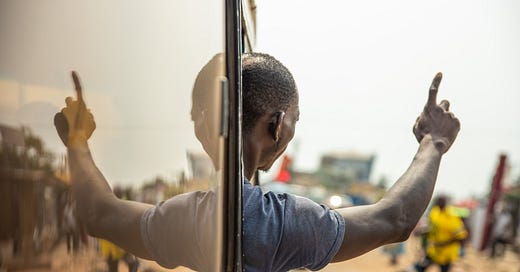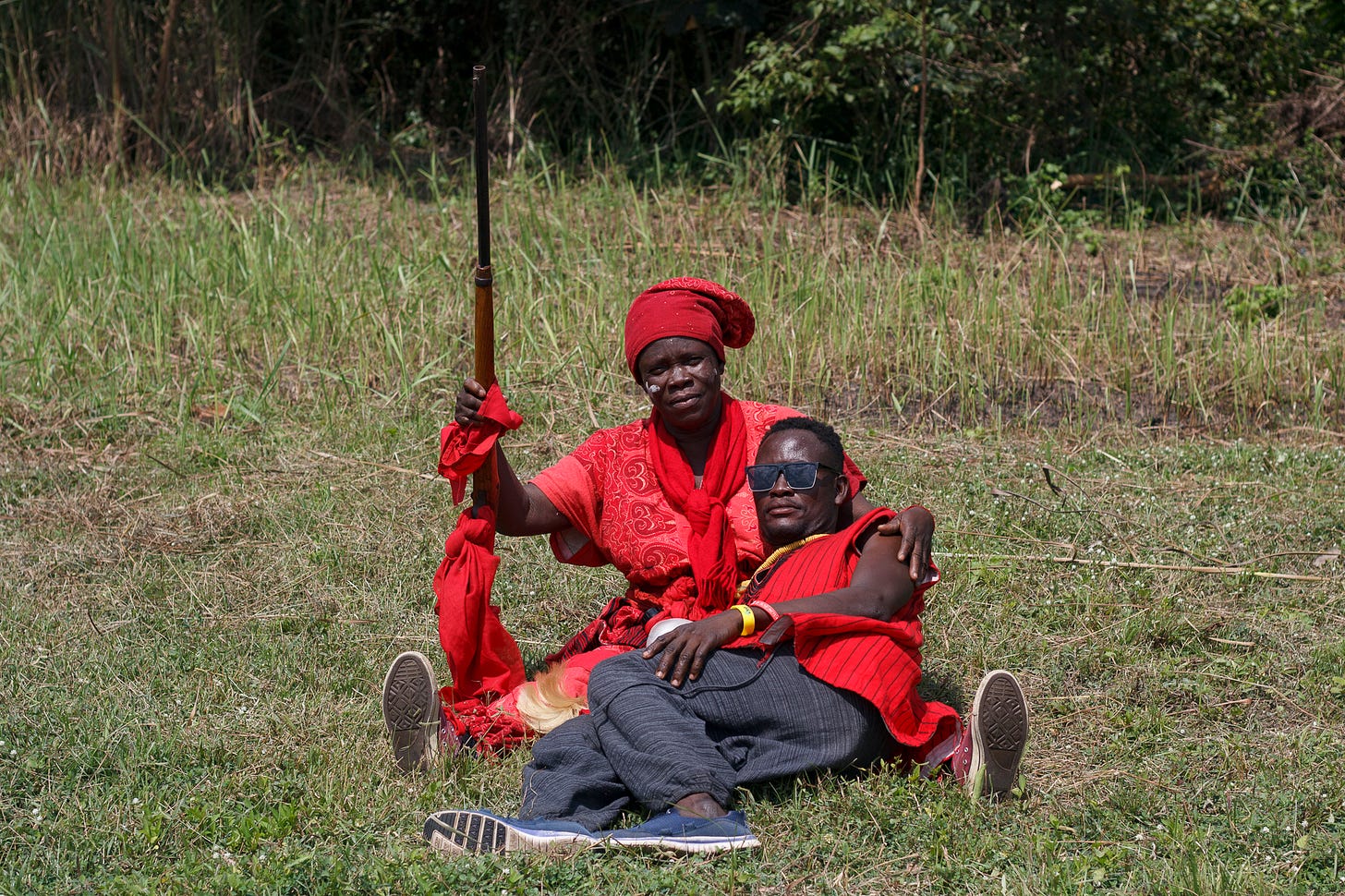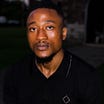The roof of a bus, the head of a man, the tip of his index finger. In that order, these are the highest planes in the photograph. The man’s finger points to the sky. His head is turned to the side, such that he faces the unfocused background. Behind him, a window seal divides the frame in two, as if to separate what is real from its reflected pair.
—Zenas Ubere
“My main goal is to connect, observe, and learn how to portray people, as closely as possible, to how they see themselves.”
I took this photo in 2019, on my first visit to Ghana. I wanted to travel there since 2017, but I stopped myself because I didn’t know anyone in the country, and there was not much information online.
Finally, in 2019, I saved as much money as possible and booked a one-way flight to Accra. I also booked a room in a hostel in a small neighborhood named Nungua. My goal was to spend as much time as possible backpacking around and learning about the country.
I photographed this image on my first moments there. Everything was new to me. I was riding on public transportation (Tro-Tro), commuting from my location to the city center. The bus driver’s “assistant” was announcing the bus destination by shouting – ACCRA, ACCRA, ACCRA – in a melodic sound. I found it fascinating how he put his head outside the window, while trying to get passengers. I wanted to experience that feeling, so I put my head outside as the bus was moving. That was when I saw the shot and decided to point my camera and photograph it.
I chose this image because it brings incredible memories of my travels.
I don’t remember ever having a bad experience while traveling or photographing in the motherland (as I call the mainland of Africa). It has been the most rewarding and joyful experience of my life. It taught me that everywhere has positive and negative aspects. Both can be an equal opportunity to learn – if I learn to embrace and not judge any of them. And both can be rewarding.
Photography can be a powerful tool to help connect people and break down borders created by fear.
My goal as an African photographer is to use my voice to challenge stereotypical and negative narratives of the African continent by collecting visual stories of daily life in different locations and presenting work that invites viewers (especially Africans) to see the remarkable beauty and achievements of Africans and black people in the continent and beyond. As well as raise questions that invite Western viewers to rethink and redefine their ideas of African society, its culture, rituals, people, celebrations, and history.
As a travel and street photographer, I consider myself a stranger with the will to learn. When I am in a new location, my main goal is to connect, observe, and learn how to portray the people, as closely as possible, to how they see themselves. I spend my time engaging with locals, explaining what I do and why I do it. I ask for permission, and I also ask a lot of questions, trying to understand. These allow me to create the most authentic moments to photograph.
— Vadu Rodrigues
About Vadu Rodrigues
Vadu Rodrigues is a visual artist born in Cabo Verde Island. He divides his time between his master’s studies at Michigan State University (MSU), where he is pursuing a Master’s in Fine Art, and his project “Movement Positive Africa”, which has led him to discover many landscapes, cultures, and people in West Africa. In 2022 he received the prestigious Mandela Washington Fellowship. His works can be seen in various projects such as ṢOJU Africa – The ṢOJU Photography Project, dearworld.com (USA), Voice Smith by Joel Trill (UK), and many others. Find more about his work here.
LAST WEEK — “Mother and Son” by Misper Apawu
This photo was taken in Agotime, in the Volta Region of Ghana. I was there to document their annual kente festival. As part of festivities, people dress in red or black traditional clothes, carry locally manufactured guns loaded with gunpowder, and reenact how their ancestors fought in war. In the crowd, among the men, I spotted a woman dressed in battle attire. That caught my attention, so I went and asked if I could make a portrait of her. She agreed. A young man ran into the frame moments later and said he wanted a picture taken of them both. I asked who he was and the woman answered saying he wasis her son. The young man said it had been years since they had a picture together.
This is the 113th edition of this publication, edited by Zenas Ubere, one of our editorial fellows. The newsletter also read on web (best for viewing images), and via the Substack iOS/Android apps.
TENDER PHOTO is a newsletter on African photography. Every Wednesday we feature a photograph and a short caption about it, and include a statement from the photographer. Last year, we published commentaries or photo-essays in response to photographs previously featured on the newsletter, including CORRESPONDENCES, CONCORDANCE, KINDRED, and INDEX. The ongoing series, AFFINITIES, will run from March 1–April 26.
Our goal is to work with African photographers by creating a platform in which they lead the cataloguing and engagement with their work.
Thank you for reading. If this newsletter was shared with you, consider subscribing, or forward to a friend. Please whitelist the newsletter to ensure you never miss it.







Love the symmetry and balance
Please how do I submit photos to Tender Photo?